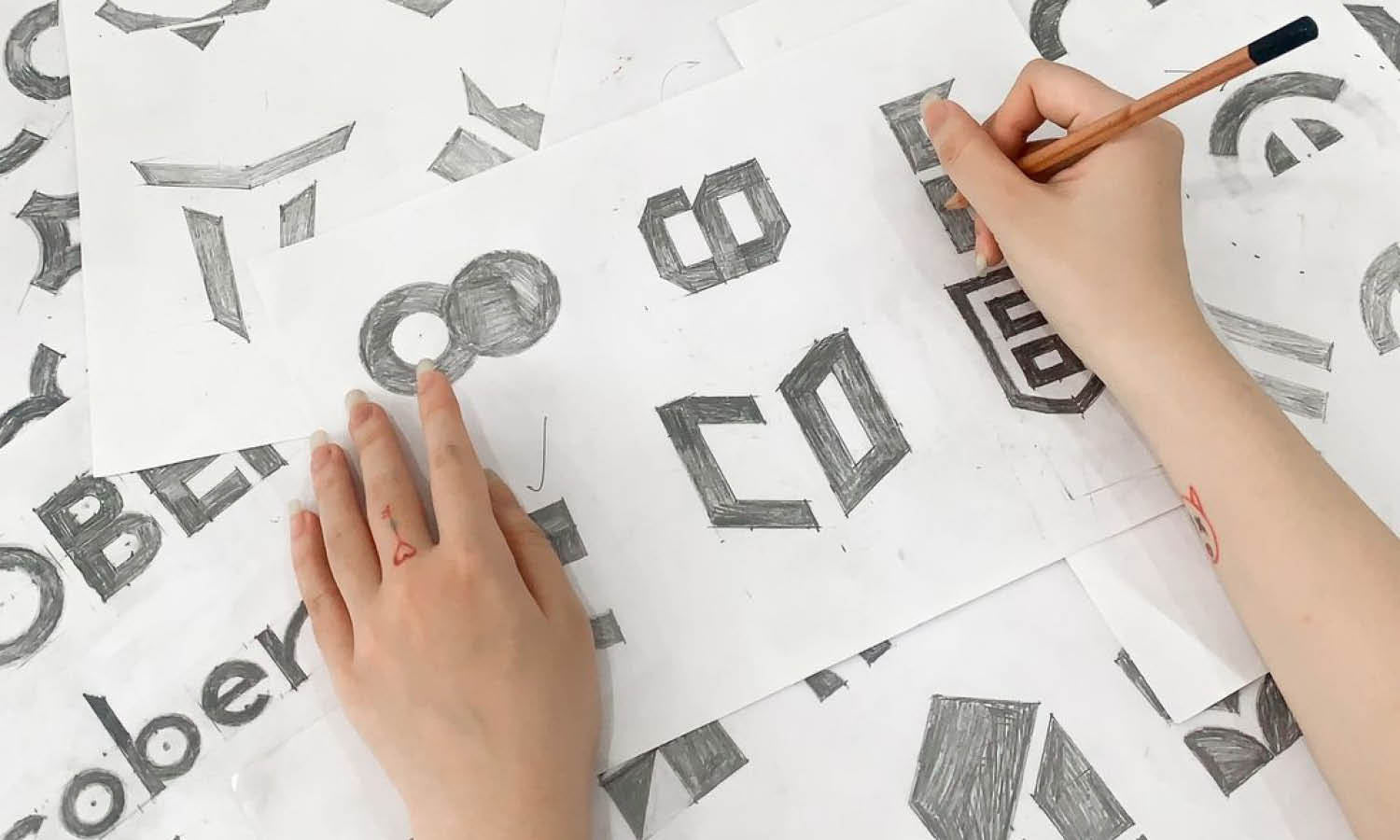How To Write A Proper Biography As A Logo Designer

Creating a compelling biography as a logo designer is not just about listing your qualifications and experiences—it’s about telling your story in a way that connects with your audience and enhances your professional image. A well-crafted biography serves as your personal and professional introduction to potential clients, collaborators, and the broader design community. It highlights not only your technical abilities and creative accomplishments but also showcases your unique approach to design and problem-solving.
As a logo designer, your biography is a critical tool for standing out in a competitive market. It should effectively communicate your design philosophy, the distinctiveness of your style, and the breadth of your experience. This narrative not only influences how potential clients perceive you but also sets the tone for your professional relationships. It's your first step in building trust and establishing a reputation as a skilled and reliable designer, making it essential to craft it with care and precision. Let’s explore how to articulate your professional journey and the elements that will make your biography resonate with your target audience.
Start with a Strong Opening
The opening line of your biography as a logo designer is your opportunity to make a memorable first impression. It should immediately engage the reader and provide a snapshot of your unique identity in the design world. Consider starting with a powerful statement that reflects your passion for design, such as, "Transforming brands with bold, innovative logos is my passion and profession." This not only captures your enthusiasm but also positions you as a committed professional.
Alternatively, you could open with an intriguing fact about your career, like the number of logos you have designed or notable clients you've worked with, to establish credibility right off the bat. Your opening should resonate with your target audience, whether they are potential clients, peers, or employers, and give them a compelling reason to continue reading about your journey and expertise in logo design.
Include Your Design Background
Detailing your design background is crucial in illustrating your path to becoming a skilled logo designer. This section of your biography should encompass your educational achievements, such as degrees or certifications in graphic design, and highlight any specialized training you have received. Mentioning the schools you attended or courses you’ve completed can add a formal touch of professionalism and authenticity to your story. Additionally, discuss your practical experience, which might include internships, freelance projects, or positions held at design firms.
This not only demonstrates your hands-on experience but also shows your evolution in the design field. Be sure to link your background directly to the type of work you do now, showing how your past experiences have shaped your current design style and approach. This connection helps potential clients understand the depth of your skills and your development as a designer, building confidence in your capabilities.
Highlight Your Design Style
Defining and articulating your design style is an essential aspect of your biography as a logo designer. This section should vividly describe the characteristics that set your work apart from others. Whether your style is minimalist, vintage, modern, or eclectic, it’s important to convey how these aesthetics reflect your personal vision and professional approach. Discuss how your design philosophy influences your creative decisions and the solutions you offer to clients. For instance, you might explain your preference for clean lines and how they contribute to creating memorable and timeless logos.
Additionally, share how you incorporate the latest design trends or the principles of color psychology to enhance brand identities. This not only demonstrates your technical expertise and artistic sensibility but also reassures potential clients of your ability to translate their vision into a visual reality. Make your style relatable by linking it to successful outcomes in your projects, thereby illustrating the effectiveness of your approach in practical scenarios.

Showcase Notable Projects
In this section, spotlight some of the most significant projects that have marked your career as a logo designer. Detail the work you have done for well-known brands or high-impact projects that have either challenged you creatively or helped you grow professionally. Describe the project goals, your design process, and the outcomes, focusing on how your logos have helped reshape brand identities or enhance market presence. Include any collaborations with notable agencies or clients, as these can underline your capacity to work at high industry standards.
If possible, mention any metrics or feedback that underscore the success of these projects, such as an increase in client engagement or recognition in design publications. This not only adds credibility to your work but also provides concrete examples of how your designs deliver value, thereby making your biography more compelling and substantiating your claim as a leading logo designer.
Mention Awards and Recognitions
Including awards and recognitions in your biography can significantly enhance your credibility as a logo designer. This section should list any accolades you have received in the field of design, such as design competition wins, recognitions from renowned design magazines, or awards from prestigious organizations. Detailing these honors communicates to potential clients and peers that your work is not only reputable but also celebrated within the industry. For each award, briefly describe the criteria and significance, which helps the reader understand the level of competition and the standards of excellence your work has met.
Additionally, if your designs have been featured in exhibitions or published in design books or articles, mention these as well, as they contribute to establishing you as a thought leader in logo design. This recognition from the design community not only bolsters your professional image but also serves as a testament to your skill and creativity, making your services more attractive to prospective clients.
Explain Your Design Process
Understanding your design process is crucial for clients looking to grasp how you approach logo creation. In this section, articulate the steps you take from concept to completion. Begin by explaining how you gather information from clients, including their brand values, target audience, and the message they wish to convey through the logo. Discuss your brainstorming techniques, sketching stages, and the digital tools you use for refining designs.
Highlight how you incorporate client feedback into your iterations to ensure the final product aligns with their vision. Also, mention any unique methods or technologies you employ, such as using AI for design variations or sustainable practices in your workflow. By detailing your process, you provide transparency and build trust with potential clients, showing them that you are thorough and client-focused in your approach to logo design.
Add Personal Touches
Integrating personal elements into your biography can make it more engaging and relatable to your audience. As a logo designer, sharing a bit about your personal life helps paint a fuller picture of who you are beyond the professional realm. This could include your design inspirations, any hobbies or activities that fuel your creativity, or even your philosophy towards work and life. For instance, you might mention how traveling influences your design aesthetic, or how nature inspires your color palettes. Additionally, sharing stories about what led you to choose a career in logo design can make your biography feel more authentic and inspiring.
Perhaps you were inspired by a particular artist or a pivotal moment in your life steered you towards the design world. These personal anecdotes not only make your biography more interesting but also help potential clients feel a deeper connection with you. They can see you not just as a designer, but as a person with passions and experiences that enrich your professional work, making you more memorable and approachable.

Use Professional Language
Maintaining a professional tone in your biography is essential to convey your expertise as a logo designer. This section should reflect a polished and knowledgeable demeanor, using clear and concise language that underscores your professionalism. Avoid jargon that might confuse non-designers; instead, opt for terminology that is accessible yet demonstrates your industry knowledge. For example, instead of simply stating you create logos, elaborate on how you develop "brand identities that resonate with target audiences and enhance brand positioning." This not only clarifies the impact of your work but also educates the reader about the value of good design.
Furthermore, maintaining a consistent voice that reflects your brand personality helps in building a strong professional image. This could be sophisticated, friendly, or innovative, depending on your style and target clientele. By using professional language, you ensure that your biography not only informs but also impresses, setting a high standard for the quality of relationships you build with your clients.
Incorporate Keywords Naturally
In writing your biography as a logo designer, the strategic placement of relevant keywords can enhance its visibility and ensure it reaches the right audience. Use terms like "logo designer," "graphic design," and "brand identity" naturally within the text to improve search engine optimization without compromising the quality of the content. Start by introducing yourself with a statement like, "As a seasoned logo designer, I specialize in crafting visual identities that encapsulate the essence of a brand." This not only defines your specialty but also embeds key phrases organically. Throughout the biography, integrate these keywords in contexts that highlight your expertise, experience, and the services you offer.
For instance, when discussing your design process, you might say, "My approach to logo design involves a detailed understanding of the client’s brand values, ensuring a tailored and impactful brand identity." By weaving these keywords seamlessly into your narrative, you help potential clients and collaborators find your biography through search engines, thereby increasing your professional reach and opportunities.
Provide Contact Information
Ensuring that your contact information is clearly stated in your biography is crucial for facilitating connections with potential clients and collaborators. Include a dedicated section at the end of your biography where readers can find the best way to reach you. This should include your professional email address, phone number, and links to your professional website and social media profiles. Additionally, you might consider adding a contact form directly on your portfolio site, making it even easier for interested parties to get in touch with you.
Remember to keep this information up to date and easily accessible. For those viewing your biography on digital platforms, ensure that the links are clickable and direct users precisely to your contact page or social media. Providing clear and multiple contact options not only makes it convenient for potential clients to reach you but also demonstrates your professionalism and readiness to engage in new projects or collaborations.
Conclusion
Crafting a detailed and engaging biography as a logo designer is essential for showcasing your professional journey and expertise. By incorporating a strong opening, detailing your design background, highlighting your style, and showcasing notable projects, you create a compelling narrative that attracts potential clients and establishes your credibility. Remember to weave in personal touches and maintain professional language throughout, ensuring that your biography resonates with your audience. By effectively presenting your skills, experiences, and personal insights, you set the stage for future opportunities and collaborations in the dynamic field of logo design.
Let Us Know What You Think!
Every information you read here are written and curated by Kreafolk's team, carefully pieced together with our creative community in mind. Did you enjoy our contents? Leave a comment below and share your thoughts. Cheers to more creative articles and inspirations!
















Leave a Comment